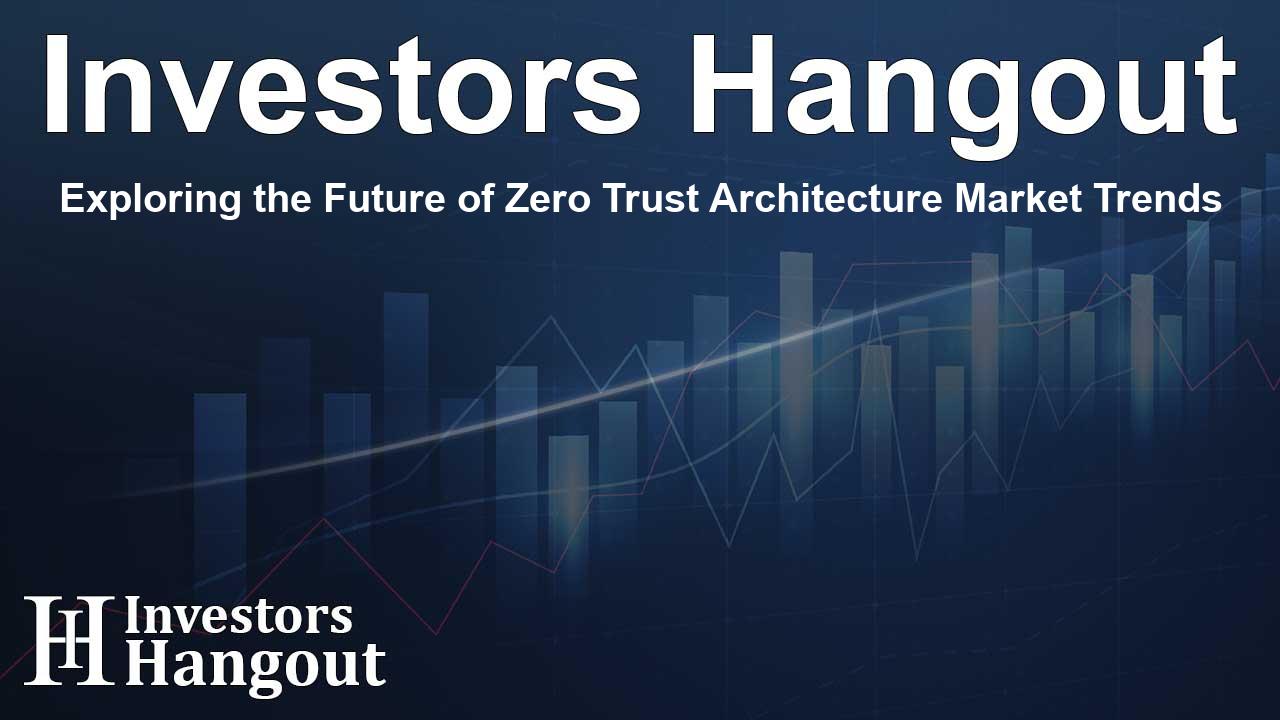Exploring the Future of Zero Trust Architecture Market Trends

Understanding the Growth of Zero Trust Architecture
The Zero Trust Architecture market is experiencing a remarkable growth trajectory, with projections indicating a leap from USD 17.3 billion to USD 38.5 billion by 2028. This shift reflects the growing need for robust cybersecurity measures as organizations navigate increasingly complex IT environments. The rise of digital transformation alongside widespread cloud adoption has necessitated the implementation of zero trust principles, which advocate for stricter security measures across all devices and users.
The Drivers Behind Zero Trust Adoption
As the digital landscape evolves, several key factors are driving the adoption of zero trust architecture in organizations:
Cyber Threat Evolution
The landscape of cyber threats is evolving at an alarming pace, prompting businesses to implement more effective network segmentation and security strategies. Zero trust architecture provides a framework that continuously verifies user and device authentication, ensuring that access to sensitive information is granted only to verified identities.
Regulatory Compliance Needs
Organizations are increasingly pressured to comply with various regulations, such as GDPR and HIPAA. Implementing zero trust principles simplifies compliance by ensuring thorough logging and monitoring of all access attempts, greatly reducing the risks of data breaches during audits.
Challenges and Opportunities in the Market
While the adoption of zero trust architecture is gaining momentum, organizations also face several challenges:
Implementation Complexities
The transition from traditional security models to zero trust architecture can be complicated and costly. Organizations may struggle with integrating legacy systems with newer security frameworks, which can impede innovation and security enhancements.
Opportunities from IoT Adoption
Conversely, the rapid adoption of Internet of Things (IoT) devices presents unique opportunities. As the number of connected devices increases, so does the potential for cyberattacks. Zero trust architecture allows organizations to secure their networks by continuously monitoring and validating all traffic, regardless of the source.
Technological Trends Shaping the Future
Several emerging trends are influencing the zero trust architecture sector:
Artificial Intelligence and Machine Learning
Artificial intelligence (AI) and machine learning (ML) are becoming integral components in zero trust implementations. These technologies automate functions such as user and device profiling and enhance real-time threat detection capabilities. By leveraging AI and ML, organizations can proactively identify potential security incidents before they cause significant damage.
Cloud-native Zero Trust Solutions
The transition to cloud-native zero trust solutions is critical as more businesses migrate to cloud infrastructures. This approach emphasizes security from the ground up, focusing on controlling access and protecting data within cloud environments, thus addressing modern compliance and security challenges.
Current Market Leaders
Several well-known companies are pivotal in providing zero trust architecture solutions. Notable players include:
- Palo Alto Networks
- VMware
- Zscaler
- Akamai
- Microsoft
- Cisco
- IBM
- Citrix
- Check Point
- Trellix
Future Prospects of Zero Trust Architecture
As organizations continue to modernize and adopt digital technologies, the zero trust architecture market is poised for substantial growth. Businesses are encouraged to re-evaluate their security frameworks and consider zero trust as a viable strategy for enhancing cybersecurity. By embracing this security model, companies can prepare for a future where security breaches are increasingly sophisticated and frequent.
Frequently Asked Questions
What is Zero Trust Architecture?
Zero Trust Architecture is a cybersecurity framework that requires all users, whether inside or outside the organization, to be authenticated and authorized before being granted access to data and applications.
Why is Zero Trust becoming popular?
The rise in cyber threats, the shift to remote work, and increased regulatory requirements have made zero trust essential for securing sensitive information and maintaining compliance.
What are the main components of Zero Trust?
Key components of a zero trust model include continuous authentication, micro-segmentation, and real-time monitoring, ensuring all access requests are thoroughly vetted.
How does IoT affect Zero Trust Architecture?
The proliferation of IoT devices increases the attack surface for organizations. Zero trust architecture helps secure these devices by requiring stringent access controls and constant monitoring.
Which companies are leading the Zero Trust market?
Prominent companies in the zero trust market include Palo Alto Networks, VMware, Zscaler, Akamai, and Cisco, among others, which offer various solutions tailored to different organizational needs.
About The Author
Contact Riley Hayes privately here. Or send an email with ATTN: Riley Hayes as the subject to contact@investorshangout.com.
About Investors Hangout
Investors Hangout is a leading online stock forum for financial discussion and learning, offering a wide range of free tools and resources. It draws in traders of all levels, who exchange market knowledge, investigate trading tactics, and keep an eye on industry developments in real time. Featuring financial articles, stock message boards, quotes, charts, company profiles, and live news updates. Through cooperative learning and a wealth of informational resources, it helps users from novices creating their first portfolios to experts honing their techniques. Join Investors Hangout today: https://investorshangout.com/
The content of this article is based on factual, publicly available information and does not represent legal, financial, or investment advice. Investors Hangout does not offer financial advice, and the author is not a licensed financial advisor. Consult a qualified advisor before making any financial or investment decisions based on this article. This article should not be considered advice to purchase, sell, or hold any securities or other investments. If any of the material provided here is inaccurate, please contact us for corrections.
